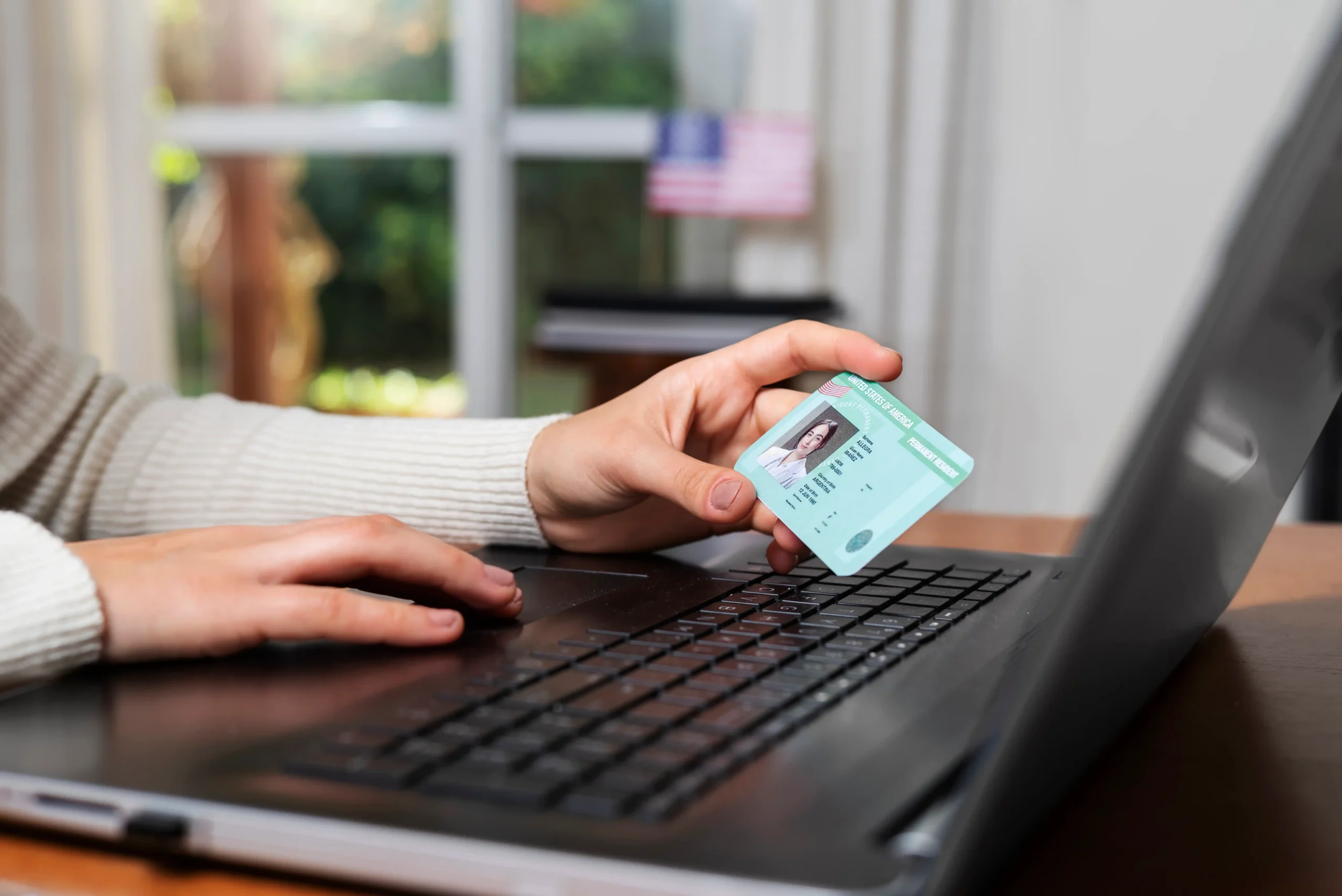A growing number of people are starting to realize that their bank accounts may not be as secure as they thought. Today, artificial intelligence is being used to create deceptive tactics that target users. According to YouGov, over 75% of Americans worry that scammers are using AI to make fake banking messages that seem more real than ever.
That fear brings up a fair question: Is my savings account protect from hackers? In this post, we’ll explain how cybercriminals operate and what steps you can take to keep your money safe. We’ll also cover real examples, the role of groups like Lazarus, and simple everyday actions that can make a big difference.
Need support after a scam? Join our community today.
Is My Savings Account Protected from Hackers?
Wondering whether my savings account is safe from hackers is not an exaggeration. And the honest answer is: not always. While banks invest in protective systems, the reality is that cyber threats are constantly changing at a speed that’s hard to keep up with.
How Checking And Savings Accounts Differ When It Comes To Fraud
Even though both types are vulnerable, the way they’re used affects how exposed they are:
- Savings accounts usually see fewer transactions, so unusual activity may take longer to detect.
- Checking accounts, being more active, often gives faster alerts when something seems off.
Some people assume that keeping funds untouched in a savings account makes it safer, but inactivity doesn’t eliminate the threat.
What Tools Do Banks Use To Protect Your Account?
Financial institutions today implement a variety of strategies to strengthen account access:
- Multi-factor authentication (MFA): Adds an extra step to logins, like receiving a code by text.
- End-to-end encryption: Keeps data secure from your device to the bank’s servers.
- Automated monitoring: Some systems use AI to recognize behavior that appears out of the ordinary.
Why These Protections Aren’t Always Enough?
Even with these tools in place, cybercriminals continue to evade them using more creative methods:
- Phishing emails that look official can convince you to share sensitive information.
- SIM-swapping and code interception can neutralize 2FA in seconds.
- According to the FTC, more than 2.3 million cases of banking fraud were reported in the U.S. in 2023, many of them involving unauthorized access to personal accounts.
Even if savings accounts seem safer, assuming that can leave you unprepared for emergencies. Asking, “Is my savings account safe from hackers?” is a good first step to stay alert and protect your money.
Why Is It Important to Protect Your Money?
Keeping your money secure means more than checking your balance. If someone else gets access, even a small breach can lock you out, delay your transactions, and damage your credit over time.
When hackers get into a savings account, the signs aren’t always obvious. Many of these incidents start with minor transactions that go unnoticed until the damage is done. Some of the most common consequences include:
- Difficulties qualifying for credit cards, loans, or other financial tools.
- Negative effects on your credit score if unauthorized activity isn’t reported early.
- Time is lost trying to resolve disputes, file reports, or speak with customer service.
A compromised account affects more than your savings; it can disrupt how you manage your daily life. Protect your social media accounts from hackers as well, since many financial scams begin with information they find there.
How Do Hackers Try to Steal Your Money?
It’s common to ask, “Is my savings account safe from hackers?”, but most people aren’t fully aware of how these attacks happen. We’re not talking about complex schemes only targeted at companies; many savings accounts are exposed due to small, everyday actions. These are some of the most frequent tactics used:
1. Phishing
This method works because it feels familiar. With clone phishing techniques, hackers send emails, texts, or make phone calls pretending to be your bank, a payment processor, or even a public institution. The goal is to make you respond quickly, before you notice anything suspicious.
Example
You get an email with your bank’s logo and a subject like “Urgent: Action Required.” The message says:
“Your account has been temporarily blocked for security reasons. Click here to verify your identity and avoid limitations.”
The link opens a fake site identical to your bank’s login page. You enter your information, and just like that, they gain access.
Learn how to spot bank phishing scams with real examples and simple tips to stay alert.
2. Malware Or Keyloggers
Some attacks start silently. A file you download or a link you click can install malicious software on your device without any obvious signs. Once it’s active, it may track your behavior or record everything you type.
Example
You download a “free Excel template to manage your finances” from a random website. When you open it, nothing seems out of place. But behind the scenes, a keylogger has been installed. The next time you type your banking password, that data is already on its way to the attacker.
3. SIM Swapping
Using this tactic, your phone provider has someone pose as you. They ask to move your number to a new SIM card—often with just a few pieces of personal information.
Example
Your phone suddenly loses signal. You restart it, but the issue persists. What’s happened is that your number has been transferred to another device. The attacker now receives your bank’s verification codes and can move forward with unauthorized transfers or account changes.
4. Brute Force Attacks
These run on software that tests thousands of password combinations until one works. It might sound inaccurate, but it still works when people use simple or recycled passwords across different platforms.
Example
A cybercriminal uses a list of leaked emails and old passwords, combining them with variations to try to log into bank systems. If your credentials haven’t changed in years, or if they’ve been part of a previous leak, they may only need minutes to break through.
Real Stories of Hackers Going After Your Money
1. The Lazarus Heist: Crypto Theft at Stake.com
The Lazarus Group, a state-backed group thought to have ties to North Korea, executed one of the most well-known cyberattacks of the past few years. This group has been associated with major breaches involving financial institutions, cryptocurrency platforms, and banking systems worldwide.
In 2023, the FBI formally held Lazarus responsible for stealing $41 million from Stake.com, a crypto-based online betting site. The operation was executed with a high level of coordination, involving phishing techniques, internal system exploitation, and stolen login credentials.
What happened?
- Group involved: Lazarus Group, a cybercriminal organization with government backing.
- Target: Stake.com, a digital gambling platform operating with crypto assets.
- Method: Unauthorized access to hot wallets, reportedly using a mix of internal system flaws and compromised accounts.
- Confirmed losses: $41 million siphoned in just a few hours.
- Authorities’ response: The FBI tracked the funds using blockchain addresses and directly linked them to Lazarus, increasing pressure and surveillance on the group.
2. The JPMorgan Data Breach
Back in 2014, JPMorgan Chase experienced one of the most extensive personal data breaches in U.S. history. A group of attackers managed to infiltrate the bank’s infrastructure and extract data from over 83 million customers, including email addresses, physical addresses, names, and phone numbers.
Even though no passwords or direct financial data were exposed, the leaked information laid the groundwork for targeted attacks such as phishing, which can eventually affect savings accounts as well.
What happened?
- Individuals charged: Gery Shalon, Ziv Orenstein (both from Israel), and Joshua Samuel Aaron (U.S. citizen).
- Timeline and scale: The breach occurred between July and August 2014, affecting about 76 million households and 7 million businesses.
- Data accessed: Names, emails, phone numbers, and physical addresses. No passwords or account numbers were breached.
- How they got in: The attackers found vulnerabilities in internal applications and used them to gain system access.
- Bank’s response: JPMorgan doubled its cybersecurity budget from $250 million to $500 million per year over the next five years.
- Customer impact: No direct misuse of accounts was detected, but the leak raised concerns about how such information could fuel more complex attacks.
Have questions about dealing with scams? Contact us for support.
Tips to Protect Your Savings Account from Hackers
Protecting a savings account goes beyond what the bank can do. The way you manage access, store credentials, and respond to suspicious activity plays a big role. With digital fraud on the rise, it’s worth asking if your current habits are keeping your money safe.
If you’ve ever wondered, “Is my savings account safe from hackers?”, now is a good time to review how you access your account and apply steps that are fully under your control.
1. Everyday Actions That Go A Long Way
Some of the most effective steps are simple. What makes the difference is how consistently you apply them.
- Use strong passwords: Skip anything predictable like birthdays or pet names. Combine letters, numbers, and symbols.
- Turn on two-step verification: This adds an extra layer. Even if someone gets your password, they can’t get in without the second step.
- Keep your data to yourself: If someone reaches out claiming to be from your bank and asks for information, hang up or delete the message.
- Check your account regularly: Logging in every few days helps you catch unusual charges or access attempts early.
2. Smarter Digital Habits
In many cases, the risk doesn’t come from the bank—it starts with how you connect to it. Using unsecured networks, outdated devices, or weak logins creates easy openings for cybercriminals. By adjusting just a few habits, you can reduce your exposure and keep your savings account better protected.
- Avoid public Wi-Fi: Don’t log into your bank account from coffee shops, airports, or other shared networks. Wi-Fi hackers are everywhere.
- Keep your device updated: Your phone or laptop should always run the latest version of its system and security tools.
- Use a password manager: These tools generate and store complex passwords, so you don’t have to memorize them all.
What To Do If You Think Your Account Was Compromised?
If anything feels off, don’t wait for confirmation. A delay of even a few minutes can give hackers time to move your money or lock you out. Taking quick action, like contacting your bank and changing credentials, can stop the damage before it grows.
- Reach out to your bank immediately: Most institutions have 24/7 customer service lines for urgent cases.
- Change your passwords: Start with your banking credentials, but also update any connected email accounts. Also, protect your phone from hackers, since it’s often the gateway to your bank, your email, and even your verification codes.
- File an official report: In many countries, you can report incidents online through the proper authorities.
Cyber Threats Are Growing. So Are Your Defense Options
After everything we’ve covered, asking “Is my savings account safe from hackers?” feels more than reasonable. Between phishing attempts, SIM swapping, hidden malware, and massive data breaches like the one that hit JPMorgan, the threats are real, but there are ways to protect yourself.
At Cryptoscam Defense Network, we focus on helping you make sense of how digital fraud works and what steps you can take to protect your data and money. We also share insights about other types of hackers, like celebrity hackers, those who have leaked sensitive information from public figures through social engineering.
We Want to Hear From You!
Fraud recovery is hard, but you don’t have to do it alone. Our community is here to help you share, learn, and protect yourself from future fraud.
Why Join Us?
- Community support: Share your experiences with people who understand.
- Useful resources: Learn from our tools and guides to prevent fraud.
- Safe space: A welcoming place to share your story and receive support.
Find the help you need. Join our Facebook group or contact us directly.
Be a part of the change. Your story matters.

![towfiqu-barbhuiya-em5w9_xj3uU-unsplash[1]_11zon Challenges CFOs Face in a Shifting Trade Environment](https://cryptoscamdefensenetwork.com/wp-content/uploads/2025/07/towfiqu-barbhuiya-em5w9_xj3uU-unsplash1_11zon-scaled.webp)





